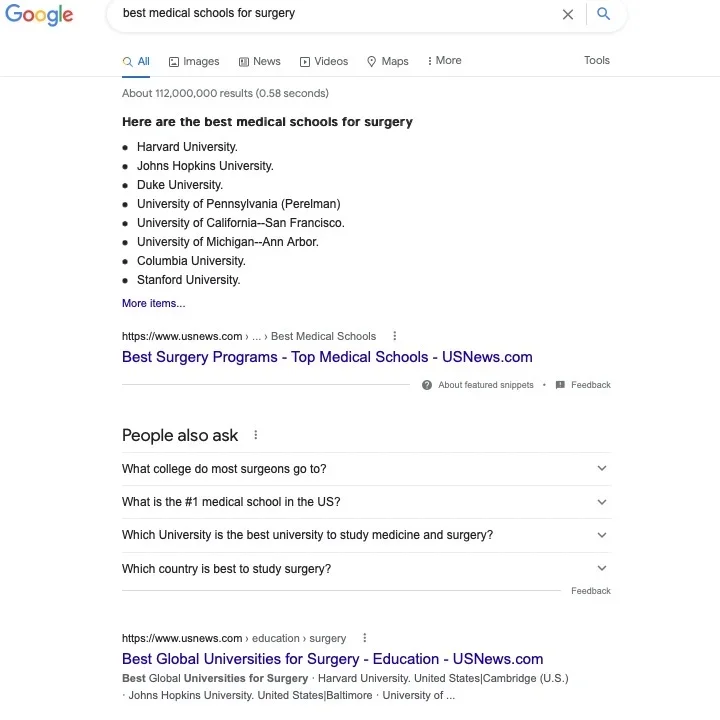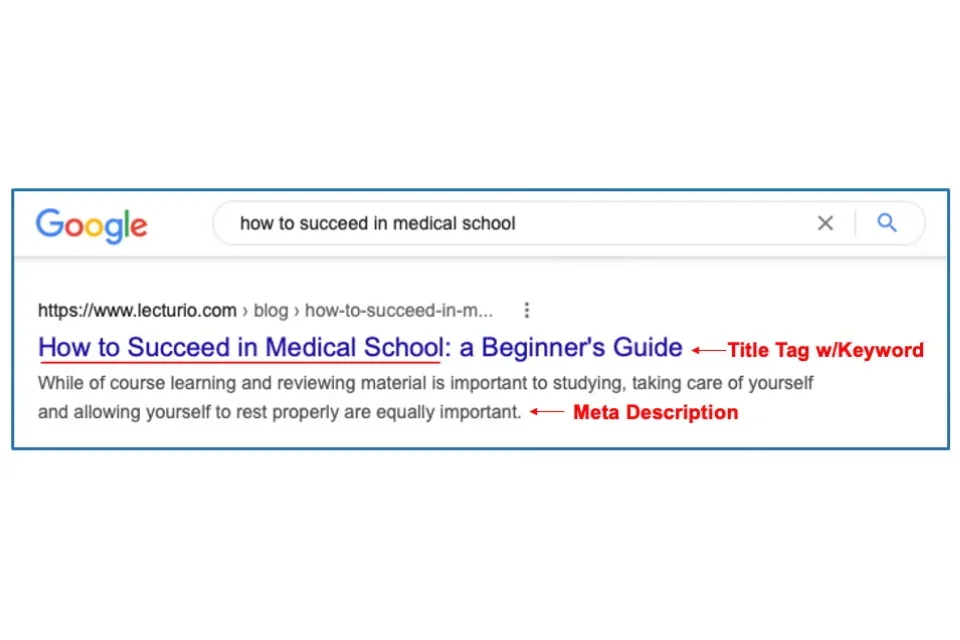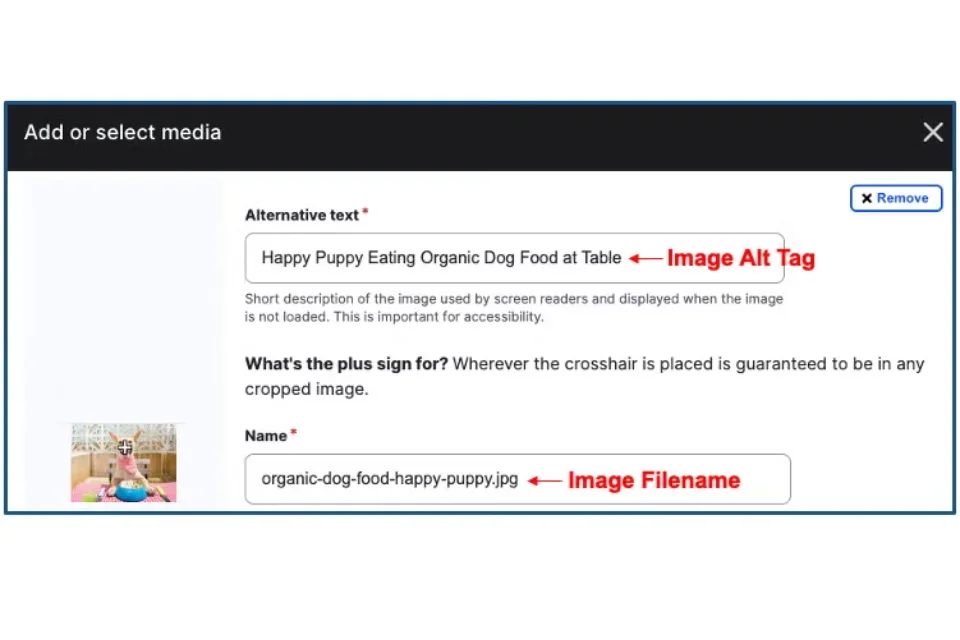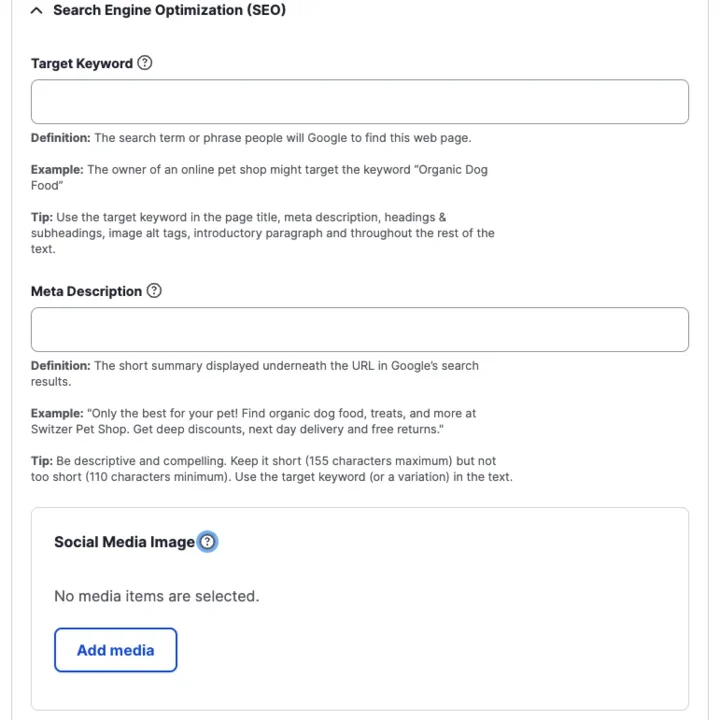Search Engine Optimization (SEO)
Best Practices
What Is SEO?
SEO is an acronym that stands for Search Engine Optimization.
- It is the process of optimizing a website so the search engines, like Google, are more likely to feature it in their results.
- The goal of SEO is to make a site rank as high as possible in the SERPs (“Search Engine Result Pages”) for popular search terms (called “keywords” or "keyphrases").
- The higher a site ranks, the more likely users are to click on the link and visit the site.
(This is the SERP for the keyword "best medical schools for surgery")

What Do You Need to Know?
Fortunately, there are only a few steps you need to follow in order to properly optimize your web content!
Step 1 - Select a Target Keyword.
Each and every web page you create should target a unique and specific keyword—ideally a high traffic keyword that people search for a lot—that also accurately represents the content of that web page.
Free tools online can help you discover which keywords will send lots of traffic to your web page. You can also request help with your keyword strategy from the DGSOM digital team.
Step 2 - Use Your Target Keyword.
Imagine we’re a pet store owner who wants their newest landing page to rank for the target keyword “Organic Dog Food” in Google. There are six key areas where we should use that target keyword.
This is the first thing the search engine spiders read when they crawl and index a page, so the keyword should be at the beginning if possible. In this case, the title would look like this:
Organic Dog Food | Food & Treats | Switzer Pet Shop
Fortunately, the Web Platform Healthsciences automatically creates an SEO-friendly title tag based on your target keyword.

In this case, the URL would look something like this:
https://www.switzerpetshop.com/dogs/food-treats/organic-dog-food
Fortunately, the Web Platform Healthsciences automatically creates an SEO-friendly URL based on your page title.
This is the short web page summary that Google displays underneath the URL when showing search results to users. In this case, the meta description might read like this:
Only the best for your pet! Find organic dog food, treats, and more at Switzer Pet Shop. Get deep discounts, next day delivery, and free returns.

Your H2 tags, H3 tags, etc. Search engine algorithms give this text more weight, so using your target keyword here helps them determine what your web page is about.
If the search engine spiders don’t find your target keyword in your first block of text, they’re less likely to rank your web page over a competitor. The target keywords should also be used elsewhere in your copy.
Not only is accurately describing images and video important for accessibility, but it’s also how the search engine spiders understand the content of your imagery.
By using your target keyword toward the beginning of the alt tag, you give the spiders one more reason to rank your page higher than others.
It's also better to write longer, descriptive alt tags ("Happy Puppy Eating Organic Dog Food While Sitting at Table with Placesetting" over short alt tags ("Puppy Eating Food").

Perfectly Optimized Web Page PDF
Step 3 - Check Your Links.
When search engines crawl your site, they click all of the links. Make sure all your links are working and target the right destination.
Step 4 - Simplify Your Architecture.
It should be easy for both search engine spiders—and users—to navigate your site. Organize your content by categories, sub-categories, sub-sub-categories, etc. and make sure your menu reflects this structure.
How to Add Meta Data in the Web Platform Healthsciences
Across every content type:
- Find the "Search Engine Optimization (SEO)" section.
- Enter your target keyword and meta description into the fields.
- Upload an image to the social media image field to encourage better social engagement.
Remember to focus on one target keyword per web page. Adding more than one keyword can confuse the search engine spiders.
Go Forth and Optimize!
As a content creator, these are the basic best practices for optimizing your web pages.
For additional information and useful tools, check out our SEO Resources page.
Still need help? Sign up for one of our self-paced SEO courses or co-working sessions. Or fill out a support form for further assistance.
